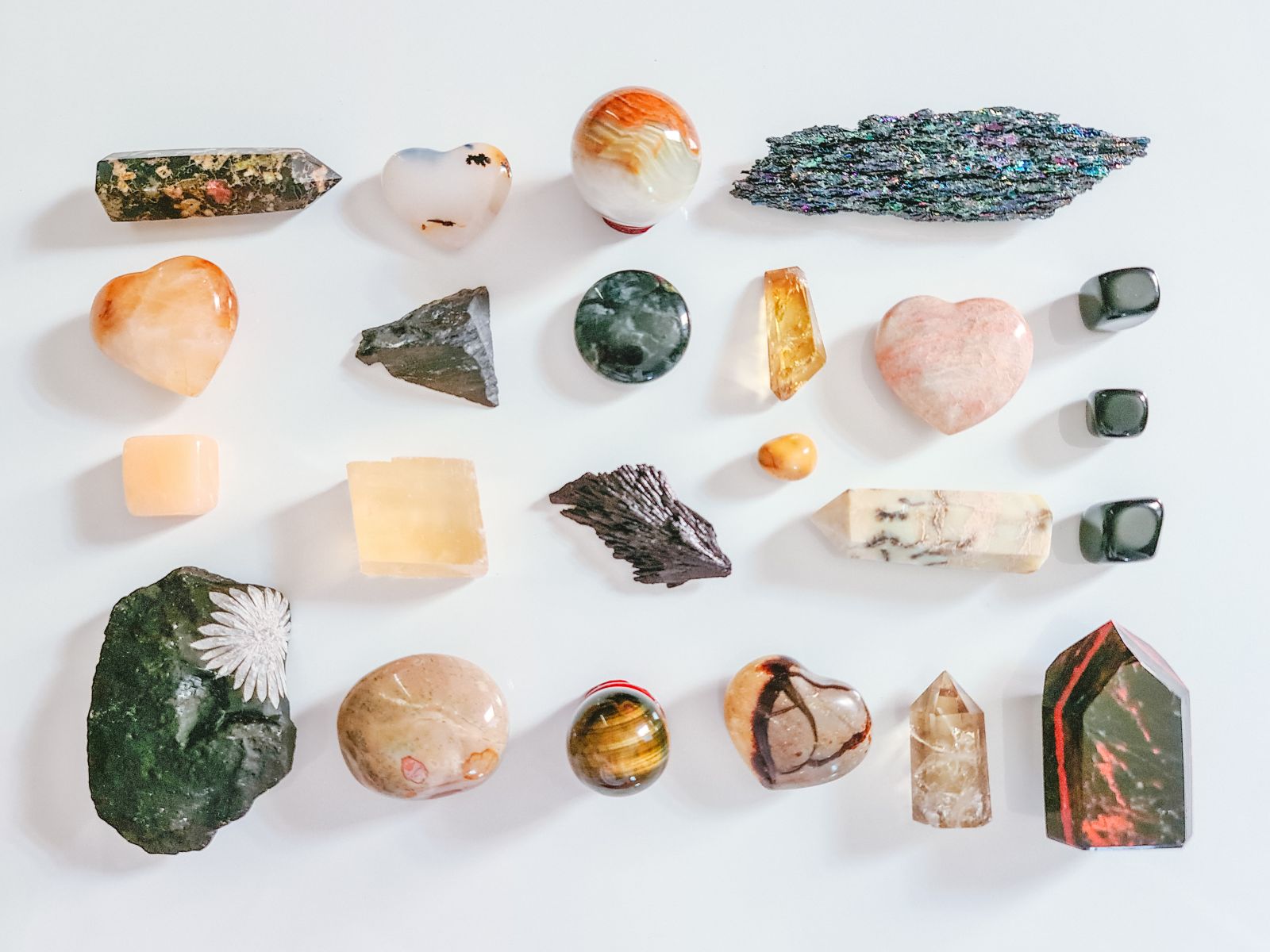Highlighted by stars and social networks, lithotherapy is one of the most popular natural practices. This method of healing by the power of stones, also called "crystal healing”, nevertheless remains unconventional and without scientific basis. What to expect, how to practice it and which stone to choose? We take stock of lithotherapy.
What is lithotherapy ?
Lithotherapy combines the Greek terms "lithos", or “stone”, and" theraperia ", or “cure”, literally meaning “method which heals by the use of stones”. It is based on the belief that some stones and crystals produce imperceptible vibrations. These would resonate with the skin, stimulating certain organs or body functions
Each stone would thus emit a specific vibration linked to various energy points: the chakras according to traditional Indian medicine, the meridians according to traditional Chinese medicine. According to lithotherapists, the method would help to harmonize, stimulate or purify, in order to rebalance the vital functions on the physical as well as the psychological level.
Where does lithotherapy come from ?
Unconventional and controversial, lithotherapy is nothing new. Crystals and stones have been used as lucky charms since antiquity, which already gave minerals unexplained virtues. Many traditional medicines also use it, for both well-being and cosmetics, from India to China, some to the point of conferring them with therapeutic virtues. Traditional Tibetan medicine uses stone powder in particular for certain remedies. In the Middle Ages, in Europe, the benefits given to stones were almost magical!
The real revival of lithotherapy only happened with the 1970s and the development of the New Age movement, advocating a return to natural and unconventional treatment methods. The same desire for naturalness is now putting gems back in the spotlight, with two new inseparable supporters: stars and social networks.

Does lithotherapy really work ?
Fans will tell you yes, scientists will pout. Lithotherapy is currently considered a pseudoscience, without any scientific basis. There is no proof of its effectiveness, nor of vibrations emitted by stones and crystals ... except radioactive minerals, fortunately excluded from the practice. The reported benefits are seen by scientists as a placebo effect, resulting from the power of suggestion, not from the stones themselves¹.
To conclude ? Lithotherapy remains safe as long as it is used lightly, and any beneficial effect in its interest, placebo or not. But it can never be a substitute for medical treatment, especially in cases of serious illness.
In some cases, the belief is also linked to sectarian excesses. Finally, the price of stones can reach new heights, sometimes for no reason. Everyone is free to believe and practice, but beware of extremes.
The basic rules according to lithotherapy
In lithotherapy, stones are considered to be charged with energy. This energy would gradually drain over time or the negative waves to which they are exposed. It would therefore be necessary to recharge them by exposing them to the sun or the moon, depending on the type of stone.
For the same reason, the stones should be cleaned regularly to purify them. This could mean aerating them, purifying them with incense or essential oils, or simply rinsing them under running water for about thirty seconds.
A split stone would lose its properties, so conservation is essential: “healing stones”, as some call them, should be protected from physical and thermal shocks. For the most fragile, they should be kept in clean cloths made of natural fibers.
Can we combine different stones and crystals ?
According to lithotherapy, yes, on condition of maintaining consistency between the minerals. Gems from the same family or with identical chemical compounds can be combined. On the other hand, stones with opposite virtues should not logically be associated. There are also stones considered to be “strong” which are preferably worn alone.
Which stone for which ailments ?
There are hundreds of stones, which can be chosen according to their virtues, their color, the chakras to activate, the month of birth or the astrological sign of the person, the ailments targeted ... In other words, choosing the right stone by lithotherapy can turn out to be complex.
Some lithotherapists recommend an emotional approach, both in terms of visual appeal and how it feels when touching the stone. Otherwise, some specialized sites offer search engines for each criterion. Whatever happens, keep in mind that this is a potential boost, not a cure.
Choose your stones according to ailments
- For breathing: amber worn as a pendant on the chest would support the respiratory system.
- For transit: the tourmaline used as a massage stone or simply placed on the stomach for about ten minutes each day would stimulate a transit that is too slow.
- For digestion: yellow jasper, used in the same way for about twenty minutes a day, would facilitate digestion.
- For the joints: the malachite applied to the painful joints acts on the energy mechanisms.
- For sleep: amethyst placed under the pillow would habe an effect on sleep by limiting nocturnal awakenings and relieving stress.
- For fatigue: imperial topaz worn directly on the skin, ideally as a pendant, has revitalizing properties.
- For morale: Amazonite would help soothe sadness and negative thoughts in case of low morale.
- For shyness: Labradorite stored in a pocket, as a piece of jewelry or placed in a room would protect against negative waves and help to express itself.
How stones are used in lithotherapy ?
Trend requires, uses multiply as it grows. The most popular practice is to wear a stone or crystal directly on the skin, as a pendant, ring or bracelet. Stones can also be used for decoration, simply arranged in a room, allowing the use of larger minerals. Their impact would be the same regardless of the finish, whether the mineral is raw, polished or cut.
Today, there are also many variations incorporating stones or stone powders: cosmetics, pill boxes, notebooks, dice games, rollers and massage oils ... and even waters, called gem waters!









